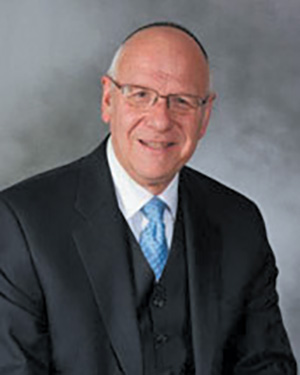
Parshat Tetzaveh
In the final nine chapters of Sefer Yechezkel, the navi describes in detail the magnificence of Bayit Shlishi, the third Beit Hamikdash that would be built during the Messianic Era. Our rabbis were troubled by some of Yechezkel’s descriptions of the laws and the service in this “Messianic Mikdash,” as they seemed to conflict with the laws pertaining to the avoda (the Temple service) and to the kohanim that are found in the Torah. Nonetheless, Chazal point out, these laws reflect the ideal observance that would be reached in the time of Mashiach and therefore represent a higher level of purity and sanctity.
The haftarah read this morning is taken from the 43rd chapter of Yechezkel and shares with us the navi’s vision of the future Temple, including the charge to build it (which was detailed in the earlier chapters), the measurements and shape of the mizbei’ach (altar) and the chanukat hamizbei’ach (inaugural service of the altar). The connection between the Torah reading and that of the haftarah is quite clear: The parsha details the rituals and sacrifices that must be followed during the seven-day inauguration of the altar that preceded the eighth day when the full service would begin in the Mishkan, while the haftarah echoes the same idea of purifying and preparing the mizbei’ach for seven days before the eighth day, which would mark the beginning of the full service in the Beit Hamikdash.
Yet, how powerful is the contrast between the two “inaugurations”! The Israelites in the desert were commanded to build a Mishkan when they were on a spiritual “high,” immediately after hearing God’s words at Har Sinai (according to the Torah text, as the Ramban explains). The exiled Jews in Bavel, however, heard the prophet’s vision begin with the words “v’yikolmu me’avonoteihem”—only after they cease their sinful ways could the future Mikdash be built. The contrast can be seen in the wording itself, as the Torah states (29: 37): “For seven days you must cleanse the mizbei’ach and sanctify it,” while Yechezkel says: “For seven days they shall cleanse the mizbei’ach and purify it.” Sanctity can be effected only after purity is achieved; purity is a prerequisite to sanctity.
The challenge of those preparing for Bayit Shlishi, the third Temple, is our challenge today. Having returned to Artzeinu Hakedosha we now must purify ourselves by sanctifying the profane and by reaching out to our brethren. It is only in this way that we can prepare ourselves for Hashem’s presence, thereby attaining the ultimate kedusha.
By Rabbi Neil N. Winkler
Rabbi Neil Winkler is the rabbi emeritus of the Young Israel of Fort Lee and now lives in Israel.










